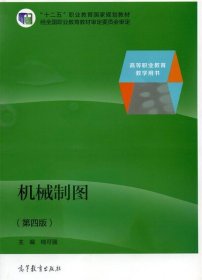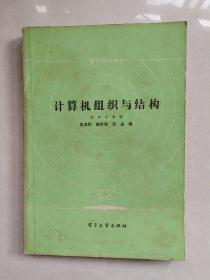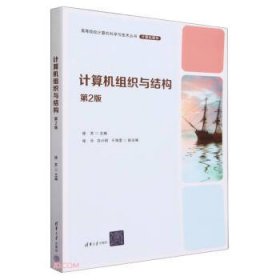
计算机组织与结构
¥ 21.1 3.8折 ¥ 55 九五品
仅1件
作者(美)斯长林 著
出版社高等教育出版社
ISBN9787040282542
出版时间2012-05
版次1
装帧平装
开本16开
纸张胶版纸
页数754页
字数99999千字
定价55元
上书时间2024-09-01
- 最新上架
商品详情
- 品相描述:九五品
- 商品描述
-
基本信息
书名:计算机组织与结构
定价:55元
作者:(美)斯长林 著
出版社:高等教育出版社
出版日期:2012-05-01
ISBN:9787040282542
字数:850000
页码:754
版次:1
装帧:平装
开本:大16开
商品重量:
编辑推荐
内容提要
本书介绍计算机的结构和功能,旨在尽量清晰、完整地介绍现代计算机系统的本质和特性。 尽管计算机领域存在着产品的多样性以及变革迅速的特点,但一些基本的概念依然适用。这些概念的应用取决于技术的当前发展状况以及设计者希望实现的价格/性能目标。本书的目的是详细讨论计算机组织与结构的基本原理,并将这些基本原理与目前的设计问题关联起来。
目录
Web Site for the Book Preface PART ONE OVERVIEW Chapter 1 Introduction 1.1 Organization and Architecture 1.2 Structure and Function 1.3 Why Study Computer Organization and Architecture? Chapter 2 Computer Evolution and Performance 2.1 A Brief History of Computers 2.2 Designing for Performance 2.3 Pentium and PowerPC Evolution 2.4 Recommended Reading 2.5 Key Terms, Review Questions, and Problems PART TWO THE COMPUTER SYSTEM Chapter 3 A Top-Level View of Computer Function and Interconnection 3.1 Computer Components 3.2 Computer Function 3.3 lnterconnection Structures 3.4 Bus Interconnection 3.5 PCI 3.6 Recommended Reading 3.7 Key Terms, Review Questions, and Problems Appendix 3A Timing Diagrams Chapter 4 Cache Memory 4.1 Computer Memory System Overview 4.2 Cache Memory Principles 4.3 Elements of Cache Design 4.4 Pentium 4 and PowerPC Cache Organizations 4.5 Recommended Reading 4.6 KeyTerms, Review Questions, and Problems Appendix 4A Performance Characteristics of Two-Level Memories Chapter 5 Internal Memory 5.1 Semiconductor Main Memory 5.2 Error Correction 5.3 Advanced DRAM Organization 5.4 Recommended Reading 5.5 Key Terms, Review Questions, and Problems Chapter 6 External Memory 6.1 Magnetic Disk 6.2 RAID 6.3 Optical Memory 6.4 Magnetic Tape 6.5 Recommended Reading 6.6 Key Terms, Review Questions, and Problems Chapter 7 Input/Output 7.1 External Devices 7.2 I/O Modules 7.3 Programmed I/O 7.4 Interrupt-Driven I/O 7.5 Direct Memory Access 7.6 I/O Channels and Processors 7.7 The External Interface: FireWire and InfiniBand 7.8 Recommended Reading 7.9 Key Terms, Review Questions, and Problems Chapter 8 Operating System Support 8.1 Operating System Overview 8.2 Scheduling 8.3 Memory Management 8.4 Pentium II and PowerPC Memory Management 8.5 Recommended Reading 8.6 Key Terms, Review Questions, and Problems PART THREE THE CENTRAL PROCESSING UNIT Chapter 9 Computer Arithmetic 9.1 The Arithmetic and Logic Unit 9.2 Integer Representation 9.3 Integer Arithmetic 9.4 Floating-Point Representation 9.5 Floating-Point Arithmetic 9.6 Recommended Reading 9.7 Key Terms, Review Questions, and Problems Chapter 10 Instruction Sets: Characteristics and Functions 10.1 Machine Instruction Characteristics 10.2 Types of Operands 10.3 Pentium and PowerPC Data Types 10.4 Types of Operations 10.5 Pentium and PowerPC Operation Types 10.6 Assembly Language 10.7 Recommended Reading 10.8 Key Terms, Review Questions, and Problems Appendix 10A Stacks Appendix 10B Little-, Big-, and Bi-Endian Chapter 11 Instruction Sets: Addressing Modes and Formats Chapter 12 Processor Structure and Function Chapter 13 Reduced Instruction Set Computers Chapter 14 Instruction-Level Parallelism and Superscalar Processors Chapter 15 The IA-64 Architecture PART FOUR THE CONTROL UNIT Chapter 16 Control Unit Operation Chapter 17 Microprogrammed Control PART FIVE PARALLEL ORGANIZATION Chapter 18 Parallel Processing Appendix A Number Systems Appendix B Digital Logic Appendix C Projects for Teaching Computer Organization and Architecture Glossary References Index
作者介绍
序言
-

【封面】
相关推荐
— 没有更多了 —


















以下为对购买帮助不大的评价